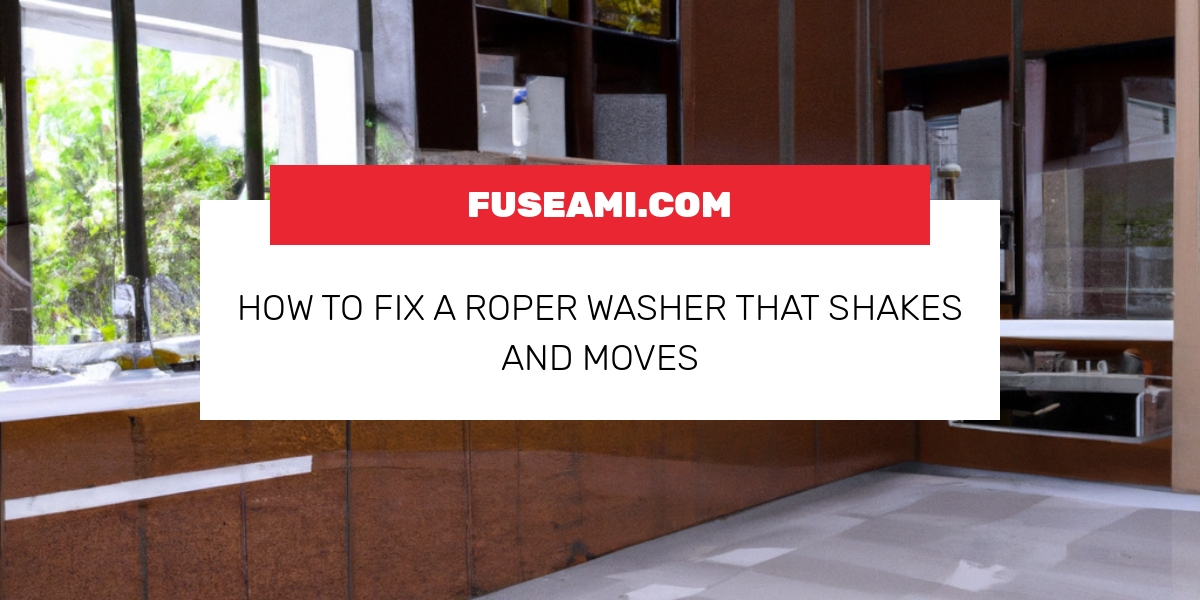Shock Absorber
To access the shock absorbers, also known as the struts, you’ll have to take off either the front or rear panels. Washers can move or shake when they’re not weighed properly. Shock absorbers that are damaged or damaged will cause the machine to produce loud noises when spinning. It is essential to address the problem as soon as you can. How to check the shock absorbers of the Roper washing machine.
- Before you start washing clothes, unplug the machine.
- Locate the shock absorbers. You’ll need to remove the front or rear panel off based on the model you own.
- Examine shock absorbers for damaged attachments, weak dampening mechanisms or leaks.
- It is recommended to change your shock absorbers if you experience one of these symptoms. Both shocks must be replaced in tandem.
Suspension Spring and Tub spring
Your Roper washing machine’s suspension springs serve to support or suspend your tub’s base. They absorb and absorb the vibrations produced by the spin cycles of your Roper washing machine. The springs may become bent damaged, broken, or even detached which can cause excessive noise and vibration when spinning. How to check the suspension spring of a Roper washing machine
- Before you begin, switch off the power source.
- To access the suspension springs, unhook the front or top panel from the Roper washing machine.
- Inspect the springs for damages or stretching and ensure they are securely fastened on both sides. Be careful when replacing springs currently in tension. Always wear protection clothing.
- If you notice damage, stretching, or wear on your suspension springs , replacement springs could be required. It is recommended to replace the suspension springs that are defective immediately. They wear out at roughly similar rate.
Snubber Ring and Damper Pad & Tube Pads
A snubber ring is a device that helps to reduce the vibrations from Roper washing machines when spinning. They are typically found at the middle of the machine, and serves as a cushion for the tub support system and base. Most tub wear pads and snubber ring components are made from hard plastic. Some damper pads are made of lubricated felt. Each type will eventually wear out and permit the tub to move excessively. They could also become too weak to support the tub. The washer might shake uncontrollably in these instances. How to test the damper pad of your washer:
- Unplug the washer and remove the front panel.
- Find and inspect the snubber. You’ll need to remove the tub springs to check the snubber.
- You will find white dust on or near the plastic snubber. For the style with felt search for dry or dislodged pads. If you are suffering from any of these signs, it is time to replace your nubber ring.
Tub Dampening Strap
Top Load washers with tub dampening bands are employed to cushion tub movement during spin cycles. Four straps are secured to the tub’s top and corner corners. Normal usage can cause the rubber straps to wear out. The tub can be in contact with the cabinet while spinning when the straps stretch or damaged. This causes the washer to shake, move, and create a loud banging noise. Excessive use and large loads will strain the straps, which can lead to premature failure. How to test the buckles that dampen the tub of washers.
- First, unplug the washer.
- Next, go into the cabinet to locate the tub dampening straps.
- Each strap is connected to the tub and the other side of the cabinet. Take a look at the tub dampening straps attentively for signs of wear, fraying, or damage.
- If you are experiencing any of the symptoms, you’ll need four replacement tub dampening bands. Since they wear out at about the same rate and wear at the same rate, it is recommended to replace all four straps at once.
Support Leg for the washer
The legs that level the washer assist in supporting it. They can also be adjusted to ensure that the washer is level. Some models come with four threaded legs whereas others come with two and two legs that self-level. If your washer vibrates or shakes during the spin cycle, be sure that it’s properly seated and level on all four legs. How do you test the legs that are level in an appliance for washing?
- While this repair isn’t a requirement for the removal of your appliance, we suggest that you disconnect the appliance prior to beginning.
- To reach the feet, tilt your washer machine to its side or side.
- Start by making sure all feet that level are equally. If you notice that any of the feet that are level is not level, conduct one test. If the issue persists, check for wear or damage to the feet. Ensure that your feet are properly threaded.
- Replacement leveling legs are needed if you have any of these problems.



